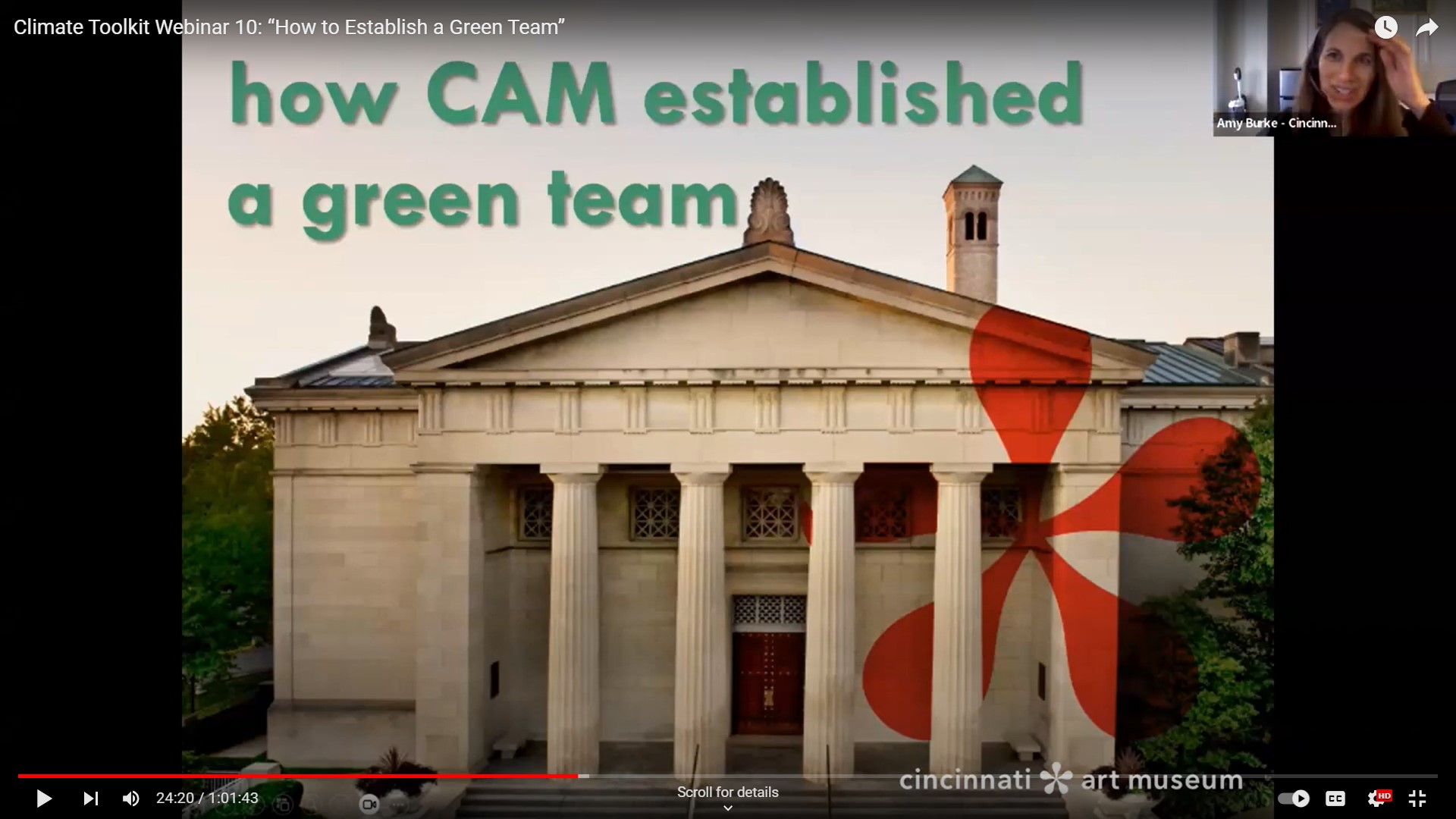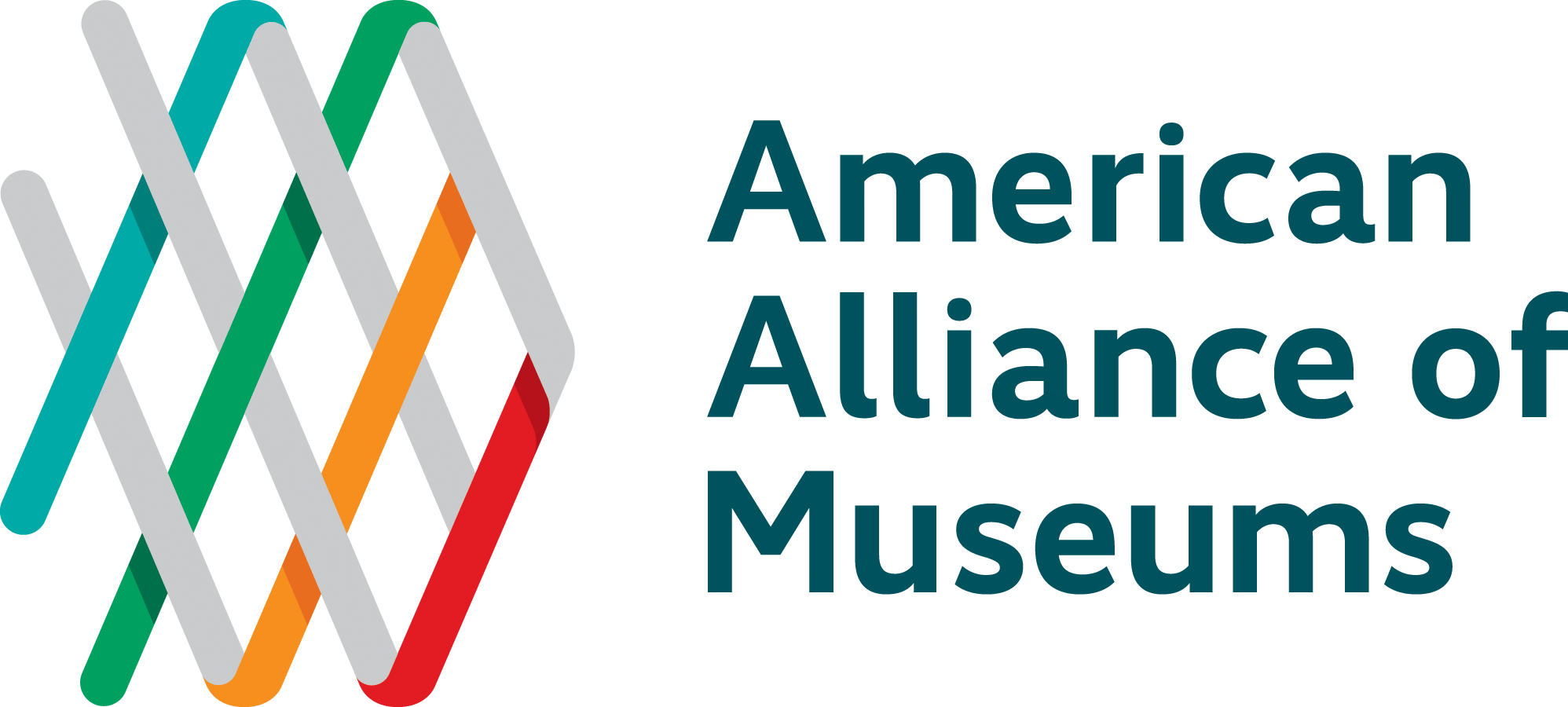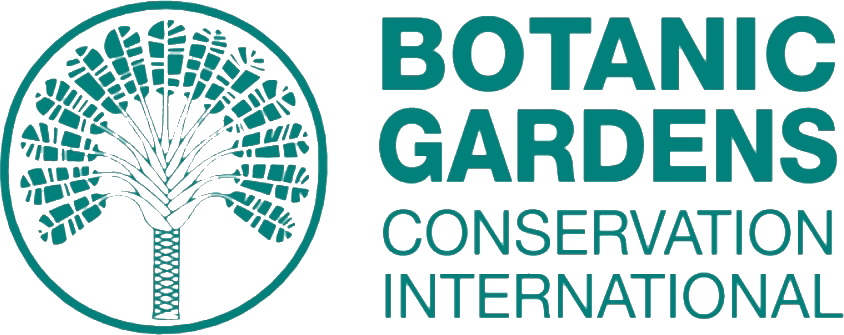Climate Toolkit Webinar 10: How to Establish a Green Team

Watch our latest webinar on “How to Establish a Green Team.” In this one-hour webinar, our speakers from Smithsonian Gardens, Cincinnati Art Museum, and The Florida Aquarium present three institutional case studies on forming green teams in the context of a botanic garden, an art museum and an aquarium. Our guests discuss the impact creating green teams can have in aligning organizational practices and philosophies around climate action; as well as how green teams can extend beyond our institutions to advocate for community change.
- Sarah Hedean, Smithsonian Gardens – HedeanS@si.edu
- Jeff Schneider, Smithsonian Gardens – schneje@si.edu
- Amy Burke, Cincinnati Art Museum – amy.burke@cincyart.org
- Debborah Luke, Ph.D., The Florida Aquarium – DLuke@flaquarium.org
Our Q&A moderation session is included below:
For Smithsonian — you talked about how standards and resources like Climate Toolkit, Drawdown and APGA Sustainability Index help you to hold yourselves accountable and inspire your efforts. Can you talk more about a specific takeaway from one of these resources that has inspired a change?
The Audubon Cooperative Sanctuary Program from Audubon International was impactful because it was our starting point, it helped organize our efforts and identified things in the early days that we needed to focus on. The Program gave us a framework/checklist to help organize our efforts. Those discussions helped us identify our priority areas. The Sustainability Index is the next phase of the accountability process, and our newest tool to help us identify the more challenging tasks to focus on.
Are there strategies for maintaining the momentum of a green team after launching, especially during periods of staff turnover?
From our perspective, our success is because the group leadership has remained constant throughout the 15 years of the Team. We believe it is important to involve everyone who is committed and interested in sustainability. The glue of our team is the long-term members who remain engaged and active. Fresh staff are welcomed and are brought up to speed by the more senior team members. Continued learning opportunities like field trips, webinar watch parties, and speakers help to keep the group engaged and make it fun.
How does your green/blue team determine its scope of work to be tackled? Who organizes the agenda, and how do you balance the commitments and time required of the green team with the daily workload of staff?
The Audubon Certification and the Sustainability Index helped to identify shortcomings that the leadership team can prioritize as an organization. The agenda is organized by the chair/co-chair, and they lead the meetings and activities. It is essential to have a Charter that lays out how the team will function including meeting frequency and roles and responsibilities. Team members and management come to an agreement to determine the amount of time for staff to work on special interests (like Sustainability).
For institutions thinking about creating green teams, how can they go about achieving internal staff buy-in as well as leadership approval?
The core team needs to be made up of staff interested and passionate about sustainability. Leadership needs to be involved as part of the conversation. Sustainability needs to be an organizational priority, part of the strategic planning process and regular staff meetings.






Recent Comments